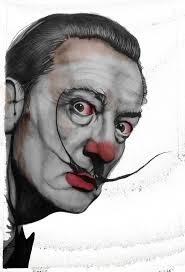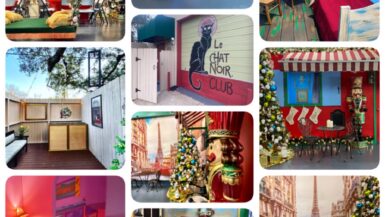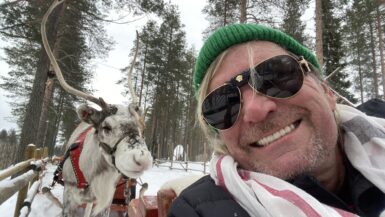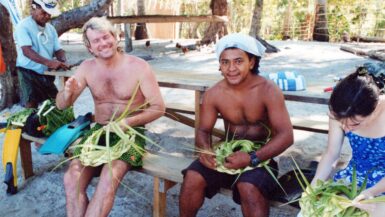I’ve been a Dali stalker lately. Ever since I came across a few strange exhibits of the infamous Salvador, I’ve been a fan. Not of his boring early stuff, mind you, but more of the “what was this guy on?”art. He was the Lady Gaga of his time. the guy making meat suits before it was cool ; The man who almost asphyxiated himself in an old school Jacques Cousteau style diving suit at one of his art shows in Britain. Yeah. He was definitely an odd one: but his art was fresh and new. One of the coolest museums I’ve ever seen is the one he built in Figueres, Spain. How a Dali museum ended up Florida was a mystery to me, but I was up for a Dali fix and while traveling through Florida this week I discovered St. Petersburg,Florida had the goods. It turns out that the galleries contain the largest collection in America, so we stopped in for a visit during a one day stopover in the area. As I was navigating my route, I accidentally discovered another one-of-a-kind-museum, the Ringling Museum; but we’ll get to that in a minute.
The founders of the Dali museum, Albert and Eleanor Morse, visited an art exposition in Cleveland in 1942 shortly before their marriage and were first introduced to Dali’s work. They bought their first painting a year later. They continued to add to their collection over a period of 40 years and became very close to the artist. At first they kept their art at their home in Ohio, but after lending some works to a museum, they realized that maybe that the works should have their own permanent home. Dali himself appeared for their Beachwood, Ohio museum opening in 1971. A decade later, they decided to move the collection to a restored marine warehouse in St. Petersburg, Florida. The last move of the museum was in 2008, when a special building was designed for it next to the Mahaffey theater on the waterfront. The new modern building is impressive with a unique design Dali would probably have loved. It’s a 3-story chrome edifice with a mirrored geometric glass bubble structure poking out of one side. A staircase that resembles the inside of a seashell from above connects the floors and tapers into nowhere.
The Dali collection includes 96 paintings, drawings, over 100 watercolors and some cool random quirky pieces like Dali’s lobster telephone. There’s an impressive grouping of photos of Dali throughout the years as well as photos with the Morses. The museum’s big draw, however, is the collection of large “masterwork” paintings by Dali. By definition, these paintings must be at least 5 foot long (in any direction) and must have taken over a year to complete. Of the 18 Dali completed in his lifetime, the museum has 7, the largest collection anywhere. The Hallucinogenic Toreador is probably the most famous of them, with an image of a bullfighter “hidden” in several images of the Venus de Milo. The large paintings are the most impressive sights in the museum (although I do love that lobster telephone!).
The museum is a two story complex, with the bottom housing an auditorium, huge gift shop and an interesting cafe. The second level has two wings, the first housing the Dali collection, the second contains temporary exhibits. At the time of writing, the second wing has a Ferran Adria exhibit for the now defunct restaurant El Bulli. Ferran was head chef for El Bulli when it was voted as the best restaurant in the world for five years. Many considered it to be a center of “molecular gastronomy’. If you were one of the unlucky millions that could never get in the restaurant while it was open, the museum display at least gives you an inside look as to what the fuss was all about. Adria’s work turns out to be the perfect fit for the Dali museum. His shocking presentations and artistry are very Dali-esque. The exhibit contains photos, notes, and documentation on some of the chef’s creations. If that isn’t exciting enough, museum visitors can try a free slice of jamon iberico, dished up from a $1700 smoked leg by a lone chef in the middle of the El Bulli exhibit. Mmmmm…. now that’s an expensive pig leg!
Less than an hour away is Sarasota, Florida, former winter headquarters for the Ringling Bros, Barnum and Bailey Circus as well as the locale of mansion and museum founded by one of the five brothers who created The Greatest Show on Earth , John Ringling. The museum is really much more than it seems at first glance. John was the last surviving brother and amassed a fortune by combining traveling shows together to create the iconic circus that traveled throughout the country by train bringing exotic animals, clowns and amazing daredevil shows. He built a 30 room Venetian style mansion overlooking the Hudson river named Ca’ D’ Zan (House of John) as well as a giant museum to house the art he and his wife collected on their journeys abroad. In addition to being able to visit the mansion and art museum, there is a miniatures museum and circus exhibition.
In what might be described as the “smallest biggest show on earth” The Tibbals Learning Center, is part of the museum complex, donated by Howard Tibbals, and features a hand-crafted miniature circus featuring over 800 animals, 1500 performers and workers and 52 wagons. Tibbals was fascinated with the circus as a child and started creating miniatures as a teen. He continued building models for over 50 years and finally made a home for “The Howard Circus” next to the Ringling Art Museum. The building was donated by Tibbals and contains his life’s work- 30,000 square feet of what the circus looked like in it’s golden age, except 1/16th the size. The two story building not only contains this giant mini-circus but lots of interesting circus props and memorabilia. You can squeeze into a tiny clown car, pose with circus wagons and even see Buffalo Bill’s gloves. The display is amazing. even more so when you realize the passion of the man who created it.
The Circus Museum next door houses several real life -sized wagons, props and trains. There’s an interesting sideshow poster exhibit as well as a cannon truck used to catapult performers into the air. The circus wagons are beautiful, brightly colored and perfectly restored. You can see Lou Jacob’s car (the clown who invented the tiny clown car concept and popularized rubber noses) and John Ringling’s personal train. The entire car with John’s bedroom, bathroom, serving areas, etc. is on display and can be viewed from a platform that allows you to walk the length of the train. If you enjoyed the circus as a child and you’re not terrified by clowns, you’ll love a chance to see the workings of the circus and the nostalgic remains of the Greatest Show on Earth.
A short walk brings you past the rose garden and the secret garden. There’s nothing particularly secret about it except for the understated gravestones.John, his wife Mable and sister Ida are buried here. This garden lies near John’s former home, Ca’ d’ Zan. Tours are available in this Mediterranean revival style mansion that entertained the likes of Will Rogers and other famous acts of the time.
The Ringling Art museum is the largest building in the complex and houses an impressive collection of art. The most famous room is the Ruben’s gallery that features 4 large paintings, but there’s lots of great works from lesser known artists as well as the beautiful courtyard full of statues and fountains. The bronze casting of Michelangelo’s David dominates the area between the two wings. There are a few other buildings on the property including the historic Asolo theater, Ringling library and the FSU center for the performing arts.
You won’t find any Dali in the Ringling museum. Somehow the two great showmen never seemed to cross paths. The Ringling complex takes at least a few hours to navigate since it’s so spread out and contains so many treasures. You’ll find golf cart drivers zooming through the property happy to take you from one place to the other. Dali isn’t quite as helpful. His third floor staircase goes to nowhere. A staircase that serves no purpose? Now that’s art!






Leave a reply
You must be logged in to post a comment.